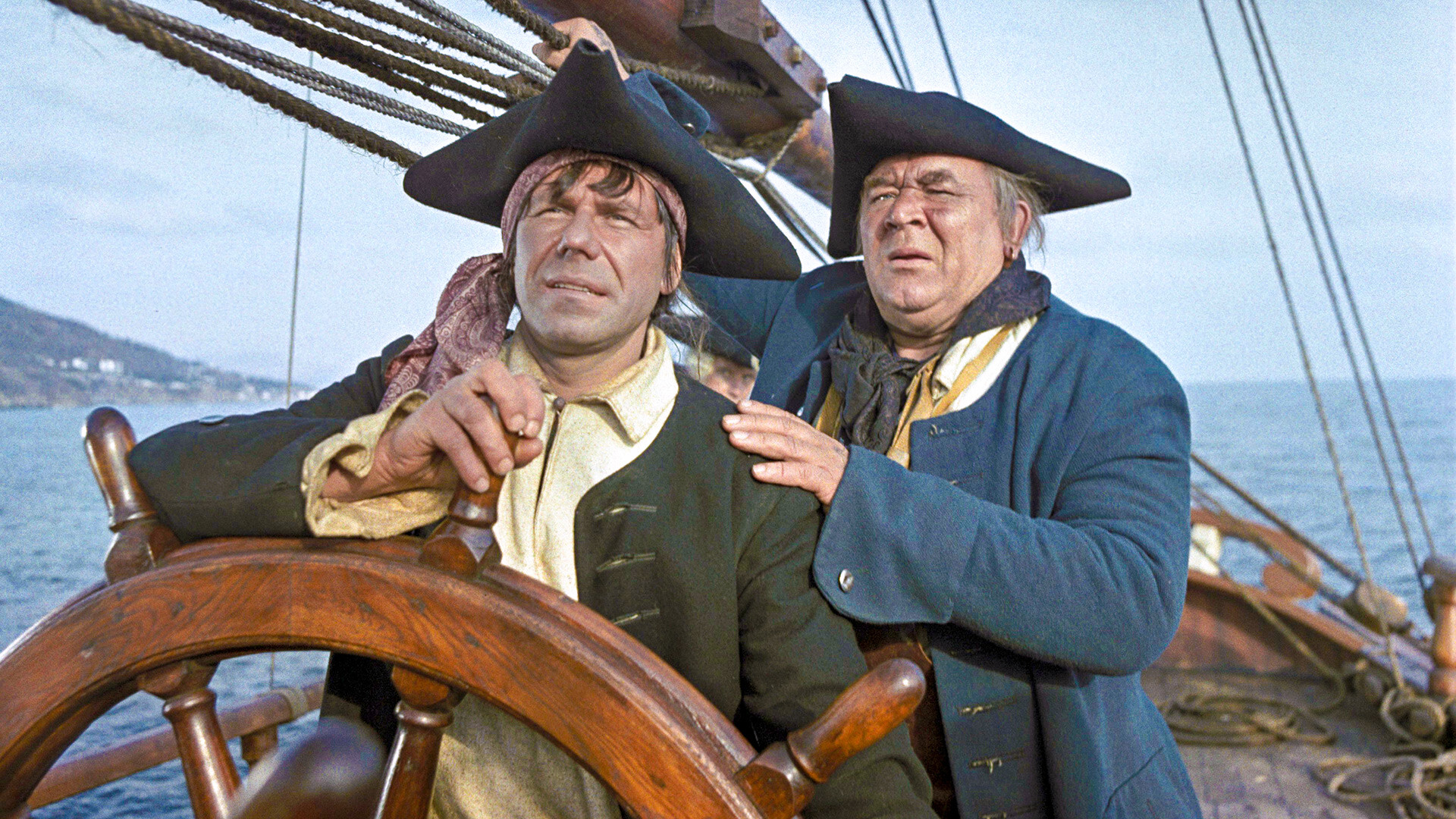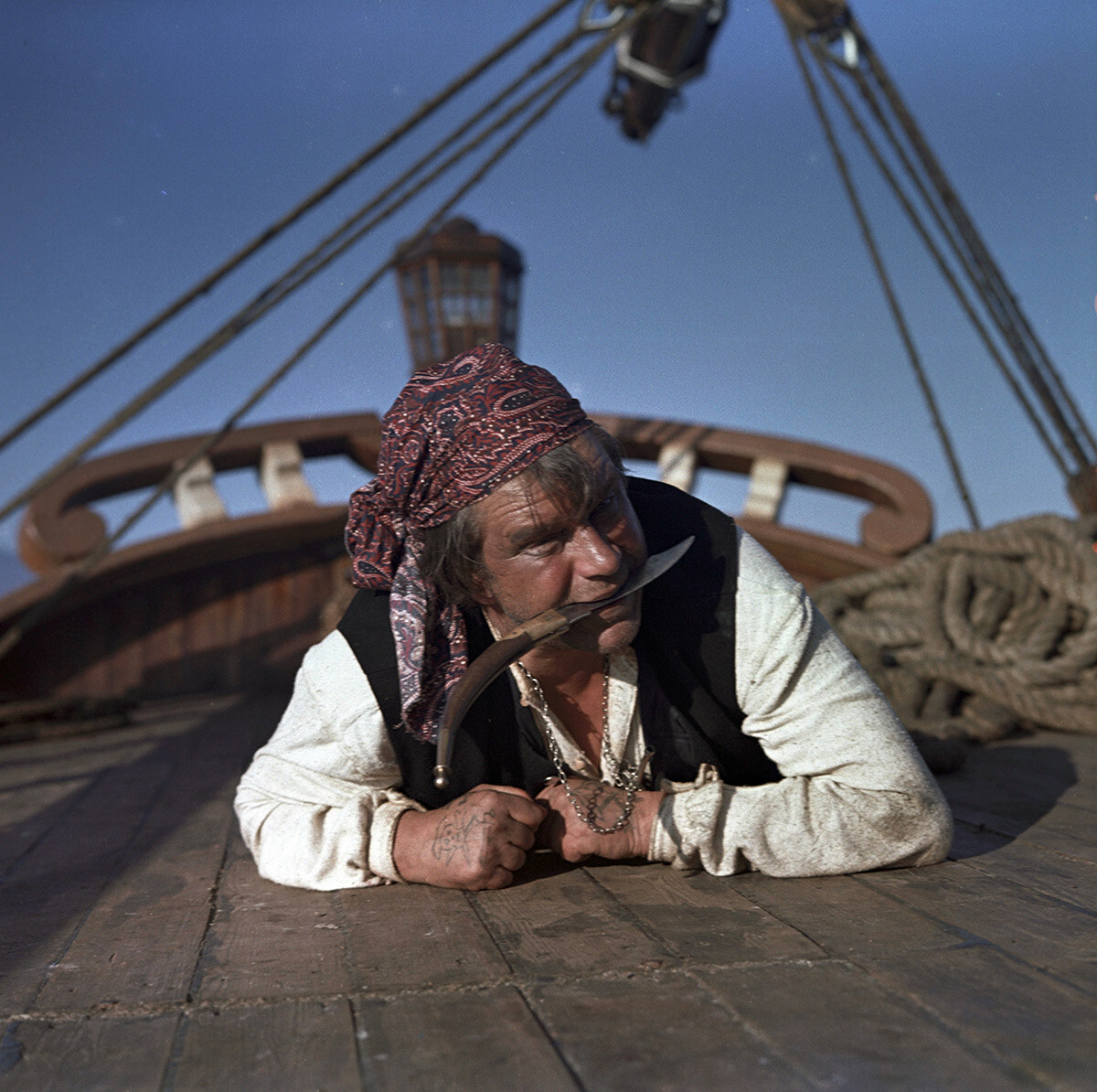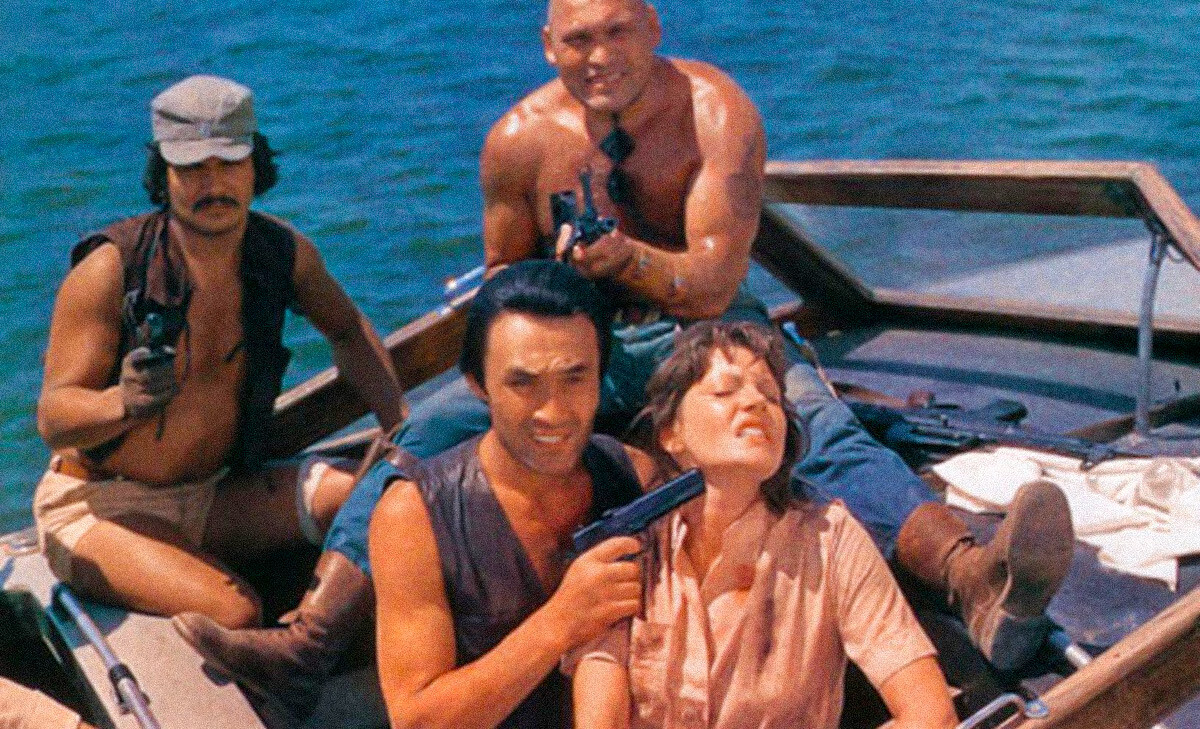
In the Soviet Union, movies about pirates were mainly screen adaptations of Western novels about ruthless English cut-throats and Spanish galleons full of gold. But, at times, there were original stories in which Soviet seamen confronted sea bandits.
Below are the three best Soviet movies about pirates.

Robert Louis Stevenson's famous novel was adapted for the screen three times in the USSR. In addition, in 1988, an animated film came out that became extremely popular both at home and abroad.
Of all the Soviet screen adaptations, the 1971 version is considered to be closest to the book.
The movie was shot in Crimea by the Moscow-based ‘Maxim Gorky Central Film Studio for Children and Youth’. And many parts were played by Baltic actors, mainly from the Lithuanian Soviet Socialist Republic.
The part of the brigantine ‘Hispaniola’, in turn, was played by the diesel/sail fisheries vessel ‘Klim Voroshilov’. Once, under its pirate flag, it almost sailed to Turkey, but was stopped by border guards.
"We are amazed by the natural beauty of Yalta and by how authentically the movie portrays the Caribbean, in which the events of the film unfold, and by the brigantine, which is indistinguishable from ships of that era," wrote the Latin American press after the movie was released internationally.

Released on the eve of the disintegration of the USSR, 'Captain Blood: His Odyssey' was inspired by several novels by Italo-British writer Rafael Sabatini about the adventures of a bold and sharp-witted buccaneer named Peter Blood.
The movie was actually co-produced with France and the principal parts were played by actors from both countries. Curiously, the Irishman Blood was played by French actor Yves Lambrecht, while his on-screen adversary, the French (!) Captain Levasseur, by Soviet actor Leonid Yarmolnik!
"An ample budget, substantial technical resources, six months of shooting in Moscow, Yalta and Cuba, two reconstructed life-size ships and five mock-ups," is how the Belgian newspaper 'Le Soir' summed up the production in 1992.
At the same time, the same newspaper criticized the movie for its poor acting and excessively free interpretation of Sabatini's novels. 'Captain Blood: His Odyssey' does, indeed, have numerous critics, but, for many people in post-Soviet space, it is on their list of favorite movies.

The movie was a box office sensation, becoming the highest-grossing Soviet movie in the USSR. It was seen by more than 87 million people in 1980.
It is the late 1970s. The Soviet cargo ship Nezhin is on its way from the Philippines to the Soviet Union with a consignment of opium for the pharmaceutical industry. But it is not destined to reach Vladivostok - the ship is attacked by pirates.
The makers of 'Pirates of the 20th Century' struggled for a long time with the censors as to what valuable cargo the Nezhin was supposed to be carrying. The bureaucrats objected to both uranium and opium. Finally, an exasperated Stanislav Govorukhin, the film's screenwriter, declared acerbically that no-one would attack a ship with tonnes of blank party membership cards on board.
The props department prepared five dummy sea-bottom mines made of wood for the production, one of which ended up being carried out to sea in a gale. When the Black Sea Command learned of this, director Boris Durov received a right old dressing down from the military.
Although the film is set in the 1970s, numerous examples of World War II weapons can be spotted in it, including the German MG 34 light machine gun, the British Sten submachine gun and the German StG 44 assault rifle.
If using any of Russia Beyond's content, partly or in full, always provide an active hyperlink to the original material.
Subscribe
to our newsletter!
Get the week's best stories straight to your inbox